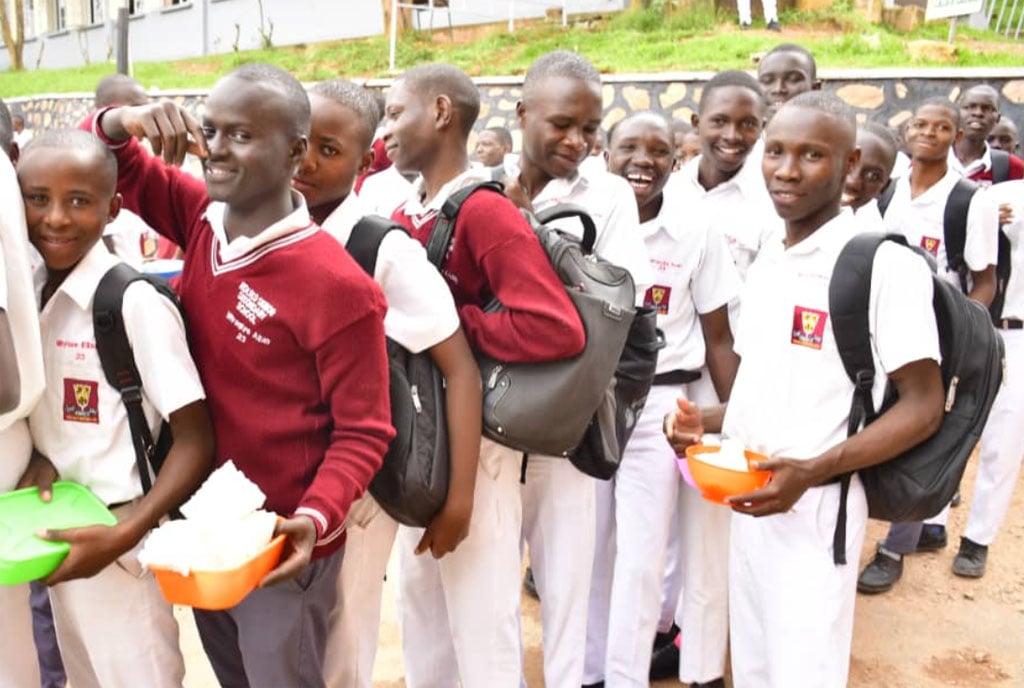Uganda’s secondary school enrollment continues to lag behind primary - World Bank

A teacher conducts a lesson in a classroom without windows in Buwagi Primary School in Kamuli District. PHOTO/DENIS EDEMA
What you need to know:
- The World Bank has also warned that a combination of late enrollment and high repetition undermines the efficiency and quality of primary education.
The World Bank has said in its 22nd Edition of Uganda Economic Update that the country has made significant progress toward its goal of ensuring universal primary education, but secondary enrollment rates continue to lag.
In the update, the World Bank states that in 2019, the gross attendance ratio (GAR) for primary education stood at 123 per cent, above the levels of other East African countries.
“A GAR over 100 per cent reflects both near-universal access to primary education and a sizable share of children attending primary school despite being outside the official age range. In 2019, the GAR for secondary education stood at 39 per cent, compared to 49 per cent among regional peers,” said the World Bank.
The World Bank explains that estimates based on official administrative data rather than household self-reports, which are less up-to-date than the GAR, reveal that enrollment in secondary education increased by only two percentage points between 2007 and 2016 despite the introduction of the USE policy.
“The lack of progress in increasing secondary enrollment is likely due to rapid population growth, insufficient infrastructure, and social factors such as early marriage,” the report suggests.
The World Bank warned that a combination of late enrollment and high repetition undermines the efficiency and quality of primary education, further stating that about one-third of P1 students are over age 23- which means they entered primary education at age 8 or above instead of 6-7.
“Late entry contributes to overcrowded classrooms and increases pressure on limited learning resources in the early primary grades,” the World Bank noted, adding that: “These conditions contribute to high rates of grade repetition, which further undermine the efficiency of primary education.”
In the 2019/20 school year, about 18 per cent of P1 students were repeaters, and repetition rates were far higher in public schools (26 per cent) than in private schools (7 per cent).
According to the World Bank, only 60 per cent of children who start primary education in Uganda remain in school at the end of P7, and cost is the most common barrier to education.
Additionally, Just 17 per cent of young adults between the ages of 25 and 34 have completed at least one grade at the secondary level, while 52 per cent left school during the primary level.
Among that group, “no funding” and “too expensive” are the two most-cited reasons for leaving primary education, and both become increasingly relevant at higher primary grade levels.
Other findings
Poor academic performance and discouragement were also cited, especially among boys and those leaving school in early grades, while pregnancy is a major barrier for girls in the later primary years. The Covid-19 pandemic exacerbated the problem of teenage pregnancy.
The World Bank said Uganda’s education system is not effectively teaching basic skills to most students. Despite the country’s remarkable progress in increasing primary enrollment rates, most students do not leave the system with basic competencies in literacy and numeracy.
“According to the most recent results of the National Assessment of Progress in Education (NAPE), only 52 per cent of P7 students meet proficiency standards in English literacy, and 39 per cent meet proficiency standards in mathematics. Moreover, proficiency rates in both subjects have declined in the wake of the pandemic. An Early Grade Reading Assessment administered in 2022 found that most P2 students cannot read a single word in their local language,” said the World Bank.




